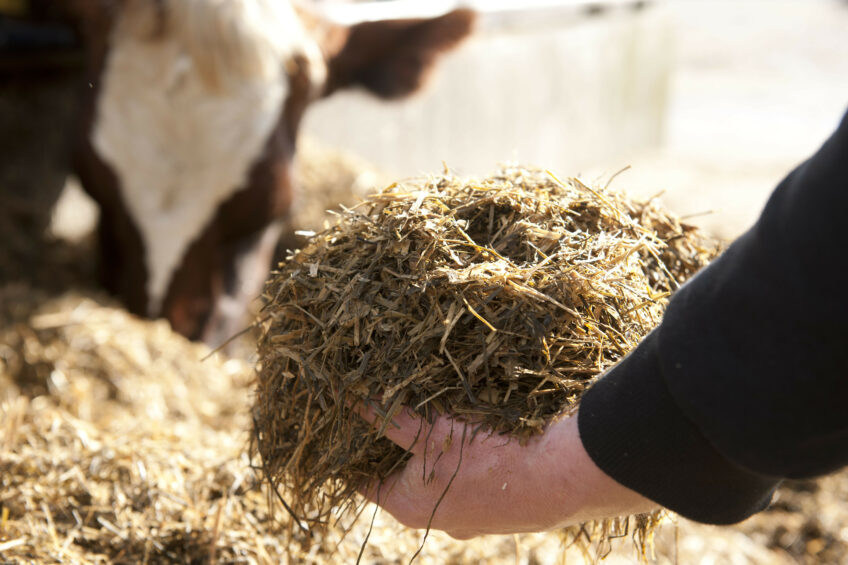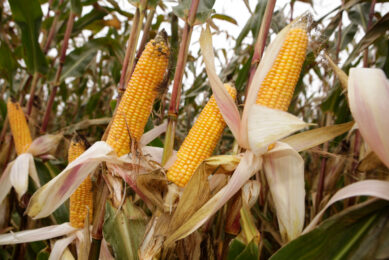Mycotoxin risk management for dairy cows

The detection of ‘mycotoxicosis’ in ruminants is not always simple. This is because exposure to some mycotoxins gives non-specific symptoms. Pevention through the use of certain feed additives can help in controlling the risks and to safeguard cow health and production.
The complex diet of ruminants, consisting of concentrates, forages and silages increases and diversifies the risk of mycotoxin exposure compared to swine and poultry. The main mycotoxins of interest in ruminants are aflatoxins, fumorisins, ochratoxins, zearalenone, trichothecenes, ergot alkaloids and patulin. However, the detection of a mycotoxin issue (often called a ‘mycotoxicosis’) in ruminants is not always easy, as exposure to some mycotoxins gives non-specific symptoms. The effects are often chronic, with hidden disorders such as reduced ingestion, productivity and fertility. The effects of some mycotoxins in dairy cows are summarised in Table 1.
However, there is a lack of clear information regarding mycotoxin effects on dairy cows. It could be linked with the very high costs of conducting comprehensive studies with various combination of mycotoxins at different levels, but also with the complexity to plan specific animals trials since there are many factors involved such as: type and level of mycotoxins ingested, the duration of the intoxication period and presence of masked mycotoxins. But also the diet, animal, environment and additives used have influence on how big the effect is on cow health.

Ruminants are different
For a long time, the impacts of mycotoxins were mainly studied in monogastrics. Indeed, ruminants are considered more tolerant to the adverse effects of mycotoxin contaminations as rumen microbiota can convert a number of mycotoxins into less potent metabolites or even biologically inactive ones. However, research has shown that only some mycotoxins are metabolised and, in some cases, only partially. Aflatoxin, for example, is converted into aflatoxicol, which is less toxic than AFB1. The remaining fraction is absorbed by the digestive tract by passive diffusion and is then hydroxylated in the liver into Aflatoxin M1 (AFM1). Ruminants are quite resistant to aflatoxicosis but the carry-over of this metabolite into milk is closely monitored because of its potential health hazard for human and particularly children, who have a high consumption of milk.
Conversely, some mycotoxins are converted into more toxic metabolites, such as zearalenone which is converted at 90% into a three to four times more oestrogenic compound, α-zearalenol. This metabolite has a similar configuration to the oestradiol, and can link to specific cell receptors. Thus, this metabolite can cause number of reproductive issues. But rumen function can be disrupted, for example because cows often have a relatively high DMI. Rumen microbes therefore sometimes have less time to detoxify the mycotoxins. Also, various mycotoxins – such as patulin – exert antimicrobial or anti-protozoal activity effects. This impairs rumen microflora ability to convert mycotoxins and thus mycotoxins can be absorbed by the organism.
How to manage the risks?
No ruminant feed is entirely free from mycotoxins contamination and multi-contamination is very common. As there is no single method to ensure an effective mycotoxin control, it is necessary to provide an effective and comprehensive risk management programme, including optimum agricultural practices in the field (high quality of seeds, crop rotation, management of crop residues, etc), during harvest (harvesting procedures, removal of high moisture plant part, etc) and at storage (moisture control, humidity control, chemical preservatives, etc) as most mycotoxins are chemically stable during storage and processing. More and more ELISA analytical kits are available to quickly determine the presence of mycotoxins in raw materials directly on field. Finally, the use of a well-chosen mycotoxin binder to prevent the mycotoxin risk is of great use and is considered as the most promising dietary approach to reduce the risk. However, despite all these practices, feed contamination can still occur. In this case, different strategies can be used and are divided into physical, chemical and biological methods. The physical methods include cleaning, mechanical sorting and separation, heat treatment, ultrasonic treatment or irradiation.
Figure 1 – Improvement of health status of dairy cows fed with 50g/ cow/day of mycotoxin additive.

Chemical approaches include various acids, bases, oxidising agents, gas or ammonia. However, these procedures have some limitations such as: limited efficacy, safety issues, changes in sensory or nutritional qualities of feed and can be quite expensive. Biological methods include the use of products added in the feed with different mode of action: adsorption of the consumed mycotoxins in the gastrointestinal tract, biotransformation, and bio-protection. Biological approach is promising because it is environmentally friendly and cost-efficient. A recent trial with a feed additives (Multiprotect) in 63 lactating dairy cows in Chile showed positive results. The cows received 50g/animal/day of the additive in the feed and hence showed a drastically reduced number of endometriosis after calving and number of cows which were not milked anymore because of health problem, such as mastitis (Figure 1).
Join 13,000+ subscribers
Subscribe to our newsletter to stay updated about all the need-to-know content in the dairy sector, two times a week.










